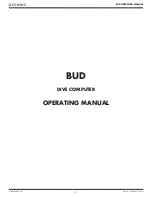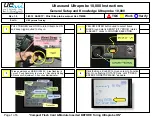
1
DESCRIPTION OF STOPS
PITCH FOOTAGE
The number appearing on each stop along with its name indicates the “pitch” or
“register” of the particular stop. It is characteristic of the organ that notes of different
pitches may be sounded from a single playing key. When this sound corresponds to the
actual pitch of the playing key, the note (or stop) is referred to as being of 8’ pitch;
therefore, when an 8’ stop is selected and Middle C is depressed, the pitch heard will be
Middle C. If it sounds an octave higher, it is called 4’ or octave pitch. If it sounds two
octaves higher, it is called 2’ pitch, while a stop sounding three octaves higher is at 1’
pitch. Likewise, a 16’ stop sounds an octave lower, and a 32’ stop sounds two octaves
lower.
Stops of 16’, 8’, 4’, 2’, and 1’ pitch all have octave relationships, that is, these “even
numbered” stops all sound octaves of whatever key is depressed. Pitches other than
octaves are also used in organ playing. Their footage number always contains a fraction,
and they are referred to as mutations. Among these are the Nasard and Quinte 2-2/3’,
Tierce 1-3/5’, and Quintflöte 1-1/3’. Because they introduce unusual pitch relationships
with respect to the fundamental (8’) tone, they are most effective when combined with
other stops, and are used either in solo passages or in small ensembles of flutes (see
explanation of Cornet in Section II).
TONAL FAMILIES
Organ tones divide into two main categories: flues and reeds. In a pipe organ, flue pipes
are those in which the sound is set in motion by wind striking directly on the edge of the
mouth of the pipe. Flues include principal tones, flute tones, and string tones.
Compound stops and hybrid stops are “variations” within these three families.
The term “imitative” means that the organ stop imitates the sound of the corresponding
orchestral instrument; for example, an imitative “Viola 8” would be a stop voiced to
sound like an orchestral viola.
Principal Voices
Principal
Diapason
Octave
Superoctave
Quinte
Characteristic organ tone, not imitative of orchestral
instruments. Usually present at many pitch levels, as well as in
all divisions. Rich, warm, and harmonically well developed.





































